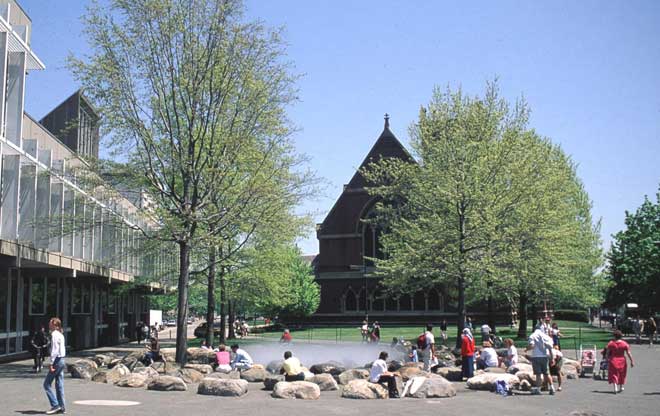
Historic Reference
Tanner Fountain is sited at the edge of one of the busiest crossroads on Harvard’s core campus, where the Old Yard, Science Center and Memorial Hall intersect. At first arrival, this loose boulder field seems enigmatic among these dignified landmarks. However, visitors quickly discover its charm as a relaxed oasis in the midst of august historic surroundings. Though not apparent, these stones are also strongly tied to Harvard’s Puritan roots, referencing the boulders cleared from agricultural fields by early New England settlers.
Image: Alan Ward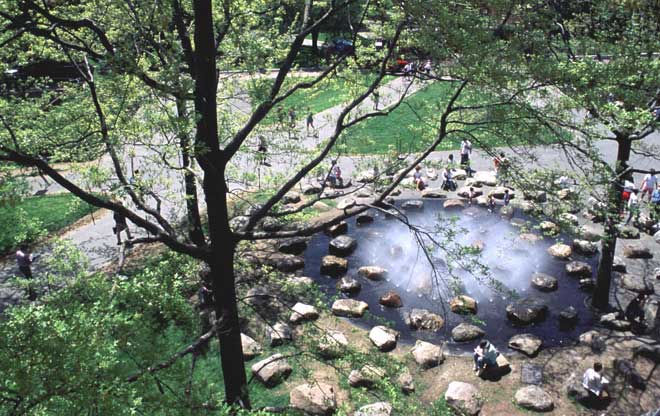
Designed for Easy Interaction
Shown here before The Plaza was constructed, the 60-foot diameter fountain overlaps pavement and lawn. This arrangement creates flexibility in social interactions: a visitor may sit along an active edge of the pedestrian corridor or away from it as an observer. While the boulders are loosely arranged in a concentric pattern, their placement is carefully considered so that the greatest density of stones is at the center.
Image: Alan Ward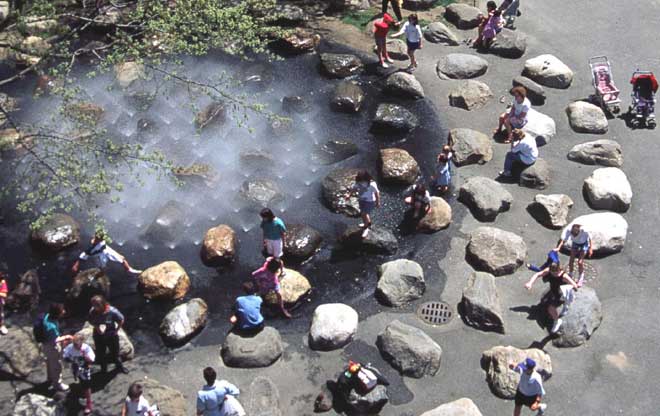
Continuously Used
An aspect that makes this fountain especially unique is that people occupy it whether it is wet or dry. From spring to fall an intermittent misty halo hovers over its center, where 32 strategically located nozzles emit fine water droplets. When the water is on, visitors can position themselves to be in or out of the mist or to occupy the threshold between wet and dry.
Image: Alan Ward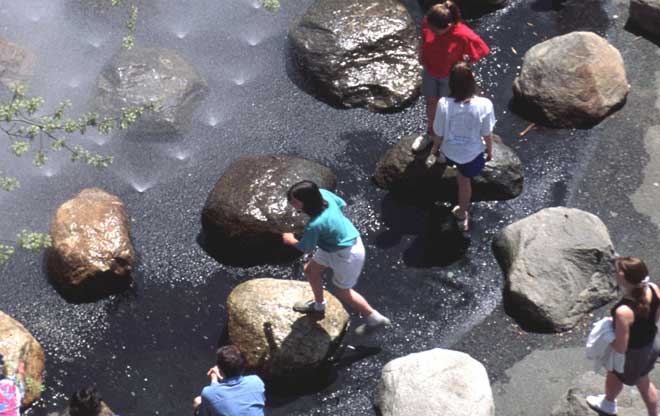
Natural Variation
The granite boulders are surprisingly versatile, offering endless ways to occupy and experience the fountain and its surrounds. The rounded forms of the stones allow people to face in any direction. Comfort is always an important consideration in landscapes and here the boulders are placed at seat height, smooth side up. As naturally glaciated boulders they vary by color, shape, size and proportion, making every location in the fountain unique.
Image: Alan Ward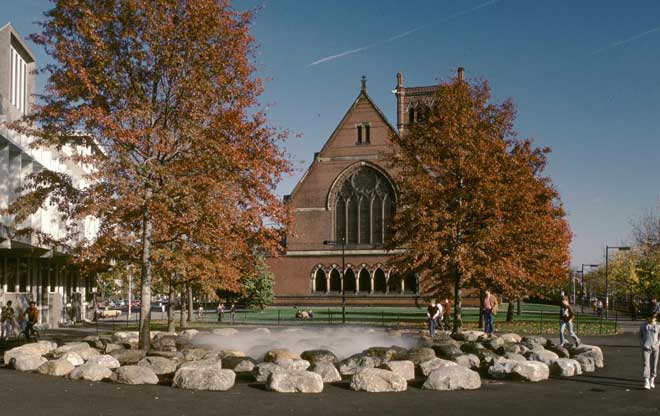
Trees Intertwined with a Fountain
Trees and fountains are rarely intertwined but at Tanner the boulders weave amongst several existing pin oaks in a playful, yet elegant engagement with the landscape. They provide shade in warmer months and, like any deciduous plant, they mark the seasons with the bright leaves of spring, fall color, and a sculptural profile in winter.
Image: Alan Ward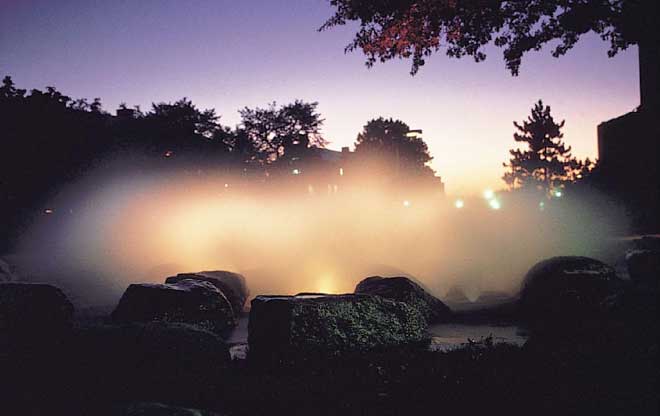
Light Traces Air
At night the fountain is transformed by the up-lights located among the mist heads. Visible from afar, the mist looks ethereal as the light traces its every movement by the air.
Image: Alan Ward
Atmospheric Silhouettes
Close up, the soft light emits a glow, giving the fountain a mood and appearance that is completely different from its daytime presence. The boulders - and people - become silhouettes that add to the atmosphere.
Image: Alan Ward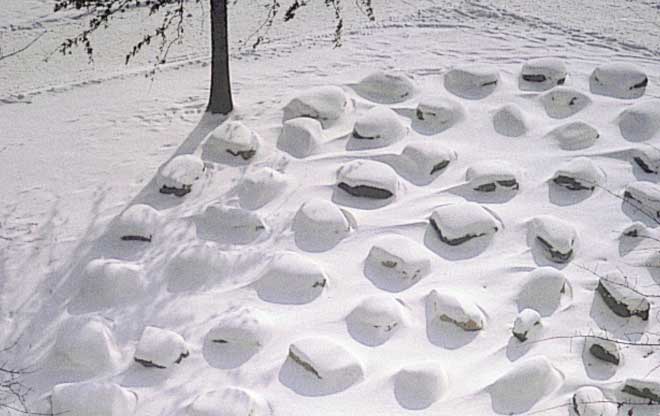
Versatility
Versatility is what makes Tanner Fountain a success. It is a landscape that is both beguiling and welcoming - day or night, teeming with people or unoccupied, wet or dry, and as shown here in winter, in all seasons. It is both landscape and art, with the ability to affect people on many levels.
Image: Alan Ward